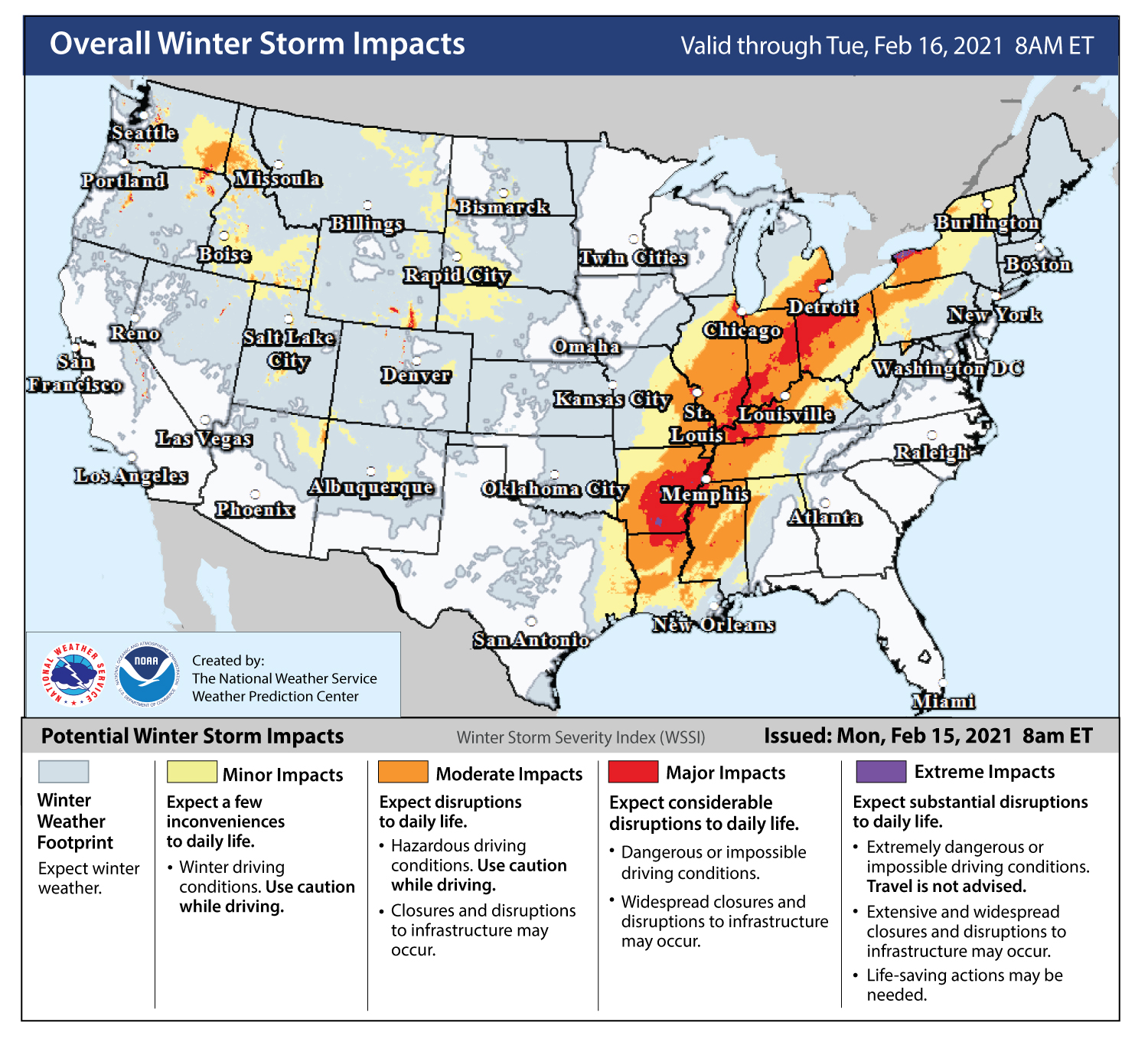The Nurture Nature Center’s social science research team recently wrapped up a national research study of the National Weather Service Weather Prediction Center’s (WPC) Winter Storm Severity Index (WSSI), and we are excited to share our findings and reports. Conducted from 2020 to 2023, the mixed-methods social science study used scenario-based virtual focus groups, surveys and interviews to solicit feedback from professional users about the WSSI, how it would be used in decision-making and how its presentation could be improved to be more useful. We conducted focus groups with users in Jackson, MS; Grand Rapids, MI; Hanford, CA; Omaha, NE; Boulder, CO; and Boston, MA.
The WSSI is an impact-based product that graphically shows expected severity of winter weather as five categories: minor, moderate, major, extreme, and winter weather area (where winter weather conditions are expected but not anticipated to impact daily life). The WSSI has an overall impact map and maps of six components: snow amount, ice accumulation, snow load, blowing snow, ground blizzards, and flash freeze.
From our research, we found that the WSSI is seen as a simple way to communicate risk and aids decision-making, helping users understand potential impact and resource needs. However, the impact-based nature of the product is still relatively new to many users, and variability in interpretation of impacts creates complications in communicating winter weather. For example, one area’s moderate impact may not be the same as another’s: one inch of snow in Boston, MA has a different impact than in Jackson, MS. Further, there are many elements of winter storms that are critical for understanding impacts and informing decision-making, including timing and frequency.
Given these variable needs for impact-related information, we found it is essential to have careful consideration of categories and clarity about thresholds for those categories. Our study participants expressed needs for impacts related to travel and power, a rolling 24-hour forecast, a forecaster’s note that can highlight important takeaways, and some changes to categories and legend descriptions. We worked closely with WPC over the course of the project, and they already made some recommended changes including updating categories and legend descriptions. However, there remains a strong need for more education about what impact-based products entail and specifically what the WSSI is and is not (it does not provide specific quantities of snow and ice for instance).
Check out our final report, journal article in Weather, Climate and Society, and a video overview of the project!



